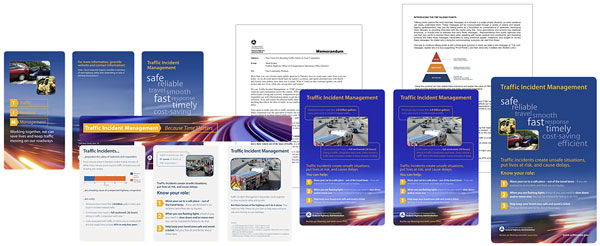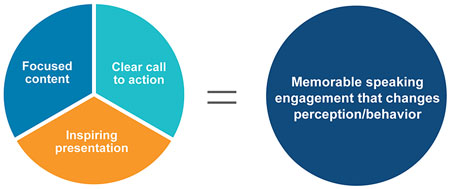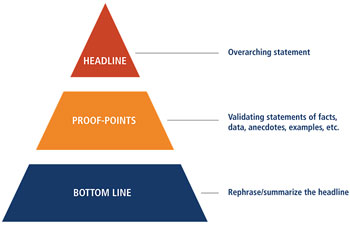Traffic Incident Management Outreach Toolkit:
Toolkit Launch Webinar PowerPoint
Printable Version [PDF 657KB]
PowerPoint Version [PPT 25.26MB]
PDF files can be viewed with the Acrobat® Reader®.
PPT files can be viewed with the Microsoft PowerPoint Viewer.
slide 1
Traffic Incident Management
Media Training 101
Trainers: Ann Marie Tropiano and Jen Truong, Sage Communications
June 19, 2012

slide notes
Welcome to TIM Media Training 101
Ann Marie Tropiano & Duyen Truong with Sage Communications
slide 2
Purpose of This Training
You've seen how we've adapted the TIM messages throughout the TIM Tools…
Now we'll take you through a Media Training 101 that will help equip you with tools & techniques to use these messages effectively during media interviews.

Visit the TIM Toolbox at: https://ops.fhwa.dot.gov/tim/timtoolbox/
slide notes
- We are going to show you how to use this Toolkit in your community.
- For those of you who may have limited or no experience running a community outreach campaign, we'll show you how to put the toolkit to use with some Media 101 training.
- TPF - The Talking Points Framework is an internal reference document that contains the most important messages of TIM in a single simple structure.
- Press Release - A press release communicates newsworthy information to journalists. This "fill-in-the-blank" template provides the standard format and style that you can quickly customize and send to relevant journalists.
- Memo - Enlist the support of your local civic organizations (e.g., PTA, neighborhood associations, etc.) to help spread the word about the importance of TIM programs.
- PPT - This dynamic PowerPoint gives an overview of TIM while encouraging audience participation. It can be used by a spokesperson at public meetings to communicate the importance of TIM and/or generate support.
- Brochure - A brochure can be used as a "leave-behind" or given to the general public as informative tool.
- Postcard - Similar to the brochure, a postcard is a visual way to inform the general public about TIM.
- Poster - This poster uses bright visuals and clear messaging to create awareness of TIM. It can be used as a backdrop for public meetings or distributed through local partnerships (e.g., trucks stops, gas stations, schools, libraries and local businesses).
- DMV Insert - Educating student drivers is an important way to spread the word about TIM. This insert can be shared with State DMV education programs across the country to explain the TIM related laws to new drivers.
slide 3
First and Foremost:
Securing a Media Interview
slide notes
- We hope you'll all take full advantage of the TIM Toolbox by assembling a small team and starting your own TIM campaign
- You'll certainly want to spread the story about that local campaign, so we'll briefly talk through how to secure a media interview
slide 4
Media Outreach
- Once you have a campaign with a good story, you should conduct media outreach to spread your story
- Tips on connecting with media:
- Develop a local media list – search for reporters with the right "beat"
- Draft your pitch email (explain your story to the reporter)
- Hook – A timely/newsworthy element (ex: recent study or news article)
- Your Story – About your campaign
- Why your story is relevant for that publication's readership
- Follow up with a phone call
- Create 3 talking points from your email pitch using local or national stats (from the Talking Points Framework)
- Convince the reporter that the topic is one his/her readers value – this is a story that will make your readers and their families safer.
- Schedule an interview time
Visit the TIM Toolbox at: https://ops.fhwa.dot.gov/tim/timtoolbox/
slide notes
- We'll go over some high-level steps to securing a media interview
- [Go through list]
- Make sure both your email and phone call pitch are intriguing, convincing, and most importantly – concise – reporters don't have a lot of time.
- When preparing your phone pitch first let the reporter know you're following up on an email (hopefully this will jog the reporter's memory); use compelling facts or statistics to bring your story to life – use local stats; if not, use the 2-3 national stats in the talking points framework.
- It can take many calls, but be patient once you score an interview it will be worth it!
- Be cognizant of reporters' deadlines. For example, weeklies usually have deadlines on Wednesdays. Long-leads like monthlies usually work three-months out and have a "blue sky" period.
slide 5
Once Secured – What you Always Need to Know
- Who the reporter is – know the reporter's beat and level of understanding
- What the reporter wants to talk about – it's perfectly fine to ask what they're most interested in discussing
- Where and when – specifically the location, length of time, etc.
slide notes
- Just like a job interview, the more you prepare, the better.
- At a minimum know –
- Who the reporter is – read their recent articles, check out their LinkedIn profile to find out their interests, etc.
- What they want to talk about – since they are interested in your pitch you should steer the discussion, but it's always look to ask if there are any other relevant topics they'd like to discuss
- Where & when – over the phone (if so who is calling who) or in person?
- Once you know this it's time to focus on effectively delivering your key messages
slide 6
Tailoring Content
slide notes
Now that you've got all the essential interview info, it's think to prepare what you want to say
slide 7
Methodology for Effective Message Delivery

slide notes
- Like any speaking engagement, you want to inspire and motivate your audience (in this case, the reporter, and in turn, their readers) to act
- In order to make an impact on your audience it takes – Focused Content, a clear all to action, and an inspiring presentation
- As for inspiring presentation—if you care about these issues and statistics, this will help the reporter to care. Approach the call from the part of the campaign you find most compelling.
- Because we have limited time today, we'll just be discussing Focused Content
slide 8
Message Math: The Rule of Three

Why the rule of three?
3 messages delivered 3 times = Memorable
9 messages delivered 1 time = Forgettable
slide notes
- To have Focused Content, you'll want to decide on your 3 most important key messages
- Why 3?
- It's mathematically proven that we tend to remember things (whether it's numbers, fact, etc.) in 3's. Anything more is information overload.
- If you try to deliver too many points, you'll be lucky if one sticks.
slide 9
Key Message Methodology
Use this format for each of your 3 key messages

slide notes
You'll recognize this pyramid from the Talking Points Framework. This Framework is purely for your internal organization's benefit. It is not intended for distribution to any external party. Its purpose is to help you organize your thoughts and frame your talking points for a brief speech or interview. It offers a framework for organizing each of the 3 key messages you decide you want to carry. This structure helps you reinforce your message so that it resonates with the reporter:
- Headline – See our points, but localize your headline
- Example: (Campaign focused on responder safety): TIM responders are heroes of our highways and roadways, saving lives every day – don't put their lives at risk, abide by the laws.
- Proof-points – If you can use local stats / anecdotes; if not use some of the national stats we list
- EX: Slow down and move over when passing by an incident scene to provide a protective buffer for responders, and the motorists behind you.
- Nearly 13% of the firefighters and police officers who die in the line of duty are killed in vehicle-related incidents.
- Traffic incidents are the number one cause of death of EMS/EMT responders. Traffic incidents are the leading cause of death for police officers.
- EX: If you can steer it, clear it. Many drivers think they should not move their car if they are involved in a fender-bender or crash. That is not the case - If (and only if) your car is drivable and there are no injuries, you should move your car to the shoulder or nearby safe place off of the road.
- EX: Slow down and move over when passing by an incident scene to provide a protective buffer for responders, and the motorists behind you.
- Bottom line – TIM responders help keep us safe and moving on our roadways, but motorist need to do their part as well by following laws like Move Over / Steer It Clear it. To sign up for the lunch and learn, county residents can visit XXX.
slide 10
Steering the Interview
slide notes
- Now that you've identified and prepared your 3 key messages, we'll walk through some tips you can use during the media interview
slide 11
The Do's and Don'ts
Do…
- Act friendly toward the reporter
- Maintain eye contact
- Project command of your messages with confidence and passion
- State your campaign name often
- Always end on a positive note
- End with a call to action for the audience
Don't…
- Say "no comment"
- Go off the record
- Take an interview cold/on the fly
- Repeat a negative comment or question
slide notes
- Many of these may seem common sense, like act friendly, maintain eye contact, others may not.
- There are things we certainly want to stress:
- Project command of your messages with confidence and passion. This helps establish credibility.
- Repetition of messages increases retention.
- Clearly state what you want your target audience to do.
- Ending on a positive note helps increase the likelihood that the next question is positive.
- At the same time, there are certainly things we want to steer clear of, such as:
- Saying "no comment" (instead you can say that you're not the designated expert on that topic, but you can connect them with the right person or that you can get back to them)
- There is no such thing as off the record.
- There is always a reason why you can take an interview cold. That extra time to prep will be worth it.
slide 12
Prepare for Every Question
- Treat every question as an opportunity to get your messages across
- Have confidence in knowing that there's always a way to bridge back to your messages
- Prepare exactly how to answer the questions that you don't want to be asked, as much as practicing your key messages.
- We'll show you how…
slide notes
- Every question is an opportunity
- You are a subject-matter expert (but be aware of what you are not an expert in too).
- Reporters are busy people, so they may take the interview without doing any research or preparation. Therefore, be prepared to politely steer the interview in the right direction
- Prepare for questions that come out of left field, or that are not accurate
- How do you do this…
slide 13
Take a Bridge…
- Let me put this in perspective…
- One question I'm often asked…
- The biggest issue for our customers is really…
- What it boils down to is…
- That's a good point, but…
slide notes
- In some cases, reporters may ask questions that may not quite be relevant.
- Take control of the interview and steer the conversation towards your messages.
- This technique is called bridging.
- This is a phrase that allows you to make effective transitions.
- A bridge is also a great metaphor. Picture yourself walking across a bridge toward your goals, toward the key messages you are seeking to deliver.
- Next we'll show you a bridge in action
slide 14
How to Build a Bridge
Negative Question:
A local community is complaining about an influx of traffic congestion due to more traffic incidents. What's being done about this?
Brief Answer:
I am not aware of that.
Bridge:
What I can tell about is…
Positive Answer / Message Points:
We're educating the public on the Move It / Move Over laws, which will decrease congestion and protect responders and motorists…
slide notes
- The polite way to steer the interview back to your key messages is by bridging.
- Whether it's a negative question, or just one that's not relevant, briefly answer (so that you won't be quoted); and take a bridge to your key message
- So, instead of answering a question with one message and stopping, you can bridge to each of your other message.
- Answer the question quickly and bridge to an example or if necessary, the bigger message that you want to focus on. This allows you to refocus the discussion and maintain control.
- Another example would be:
- NQ: So who is really at fault for the terrible congestion caused by traffic incidents?
- BA: There's no one to point a finger at here.
- B: What it boils down to is…
- PA: The importance of everyone knowing their role. Such as motorists moving their vehicles out of the lanes of traffic if they are involved in any kind of traffic incident, and slowing down and moving over a lane whenever they see flashing lights. And responders working together…
slide 15
Getting Your Sound Bite: Flagging
- The most important thing is…
- The heart of the issue is…
- What we are really excited about is…
- If I could leave you with one thing today, it would be…
- This is paramount…
slide notes
- Another way to steer the reporter is by taking a Flag.
- If your interview is 30 minutes, you are giving the reporter a lot of info.
- Help that reporter out by flagging the key messages by starting with these phrases.
- You use a flag to signal to your audience that a particular point is critical. The metaphor, of course, is waving a flag for attention.
- Finally, our favorite question is "Do you have anything else to add?"
- YES, you do! Restate a key message.
- Keep in mind that both of these techniques – bridging and flagging – need to be used with subtlety. Ensure that the transitions are smooth. You can jump from A to C, but not A to Z.
slide 16
On Your Own Time…
Practice, Practice, Practice!
- Practice in front of a mirror, spouse, colleague or friend
- Record yourself speaking to get used to hearing your own voice
- After interviews, be receptive of feedback
- Commit to being a life long learner
slide notes
- Even the best public speakers in the world – Bill Clinton, Obama, Ronald Regan – all needed continual practice.
- Routine practice is the only thing that will offer you the greatest level of comfort with your messages.
- Remember that an interview is like a presentation and that your job is to be attuned to your audience's needs, BUT more importantly get your message across.
- Keep an open mind to feedback. Leverage our strengths and focus on developing weak areas.
- Be cognizant of how your messages are being received.
- You'll find that as you continually refine your presentation skills, you'll have better results.
slide 17
Q&A
slide notes
None.